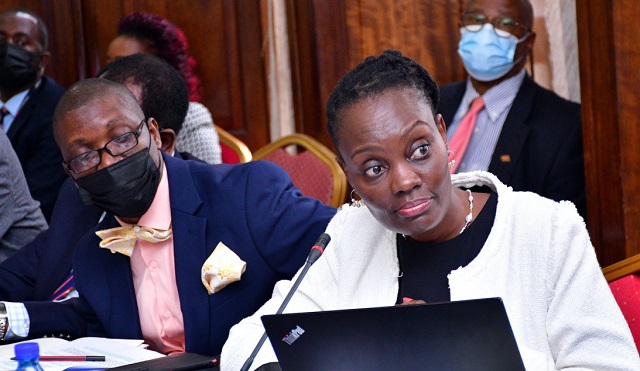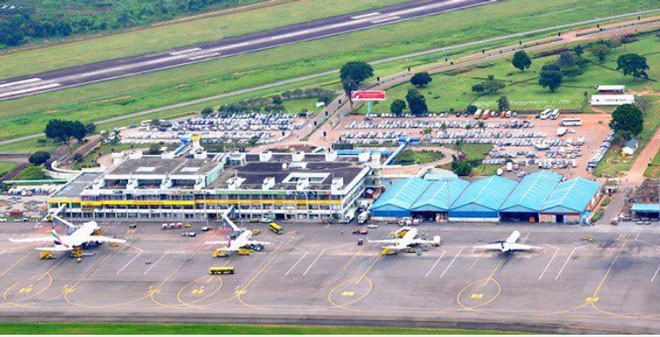
Analysis of Uganda’s Aviation Sector Year Ending 2022 and Beyond
COMMENT | DEREK NSEKO | Unless you have been living under an extremely remote rock in Uganda, your outstanding view of the aviation sector in 2022 has likely been defined by the month-long probe by the Committee on Commissions, Statutory Authorities and State Enterprises (COSASE) on Uganda Airlines.
The fallout from that probe has already helped shape the future at least in the short to medium term with the knee-Jerk reaction having been an executive level reshuffle that is still on-going at this time.
Beyond that, the sector is striking a balance. It has been leveraging the green shoots of recovery and creating new pathways for growth.
In 2023, the global aviation industry is expected to post its first net profit since 2019, a positive outlook after a difficult couple of years. While the rest of the world just might be turning the corner, Africa’s net loss in 2022 is expected at $638 million with the figure shrinking to a net loss of $213 Million in 2023.
The continent’s complexity, regulatory disharmony, lack of liberalization and economic vulnerability will continue to hamper the potential for collective profit.
While COVID is putting far less pressure on airline operations, Vaccination is still a key element that defines ease of travel. But only 22.3% of Africans have so far received at least one vaccine compared to the global average of 67.9%.
It turns out that 2018 and 2019 were peak years for Uganda’s passenger air transport sector. Entebbe International Airport, the country’s main gateway recorded up to 1.8 Million passengers in a calendar year, threatening the airport’s maximum capacity of 2 million passengers annually at the time.

Domestic travel accounted for 31,600 passengers, a record high but still abysmal for a country with a population approaching 50 Million. Arua alone accounted for close to half the traffic followed by Kasese, Moroto, Gulu, Pakuba and Kidepo.
With travel literally grinding to a halt in 2020 and the sector facing its lowest point, the past year has created renewed enthusiasm and a promise for the good old days. Travel has bounced back quicker than anticipated and much faster than projected by even the most optimistic of industry analysists, commentators and experts. This despite various economic pressures including the implications of a war in Ukraine.
Airlines hits 85% passenger recovery rate in 2022
According to the Uganda Civil Aviation Authority’s published statistics for the 11 months leading up to November 2022, Entebbe International Airport has welcomed an average of 4250 passengers per day, allowing for a projection of 1.55 Million passengers for the calendar year 2022. This represents an 85.6% recovery from the pre-pandemic peak. On the domestic front, 2021 recorded only 13,800 passengers, dominated in large parts by arrivals and departures at Arua, Kisoro and Kasese.
The national airline has been built up as a hub carrier, however Entebbe International Airport is still a long way off being referred to as a hub facility. The world’s major hubs leverage the hub and spoke model that is widely used across the industry and often with the presence of a dominant hub carrier.
The model is further enhanced by the existence of a large and efficient transit system.
In 2018-2019, only 11% of the international traffic at Entebbe was comprised of passengers in transit. The number naturally dropped to 7.6% for 2021-2022. For the national airline, a dedicated terminal might be an answer for its future hub ambitions and the establishment of a strategic advantage. It could also help streamline the Uganda Airlines passenger experience, afterall the overall passenger journey does not start and stop at the door of an aircraft. Of what use is a wonderful onboard experience aboard an Airbus A330 only to be followed by underwhelming frustration at Entebbe.
One area to be applauded at Entebbe is the Completion of a 100,000 tonnes cargo centre. The cargo sector grew significantly during the past few years of low passenger numbers, largely attributed to the rise of e-commerce during the pandemic and the bridging of the cost gap between Shipping and Air Cargo. Volumes peaked at 65.6 million tonnes in 2021 and although numbers are expected to shrink in 2023 due to economic uncertainties, the prioritization of air cargo remains a huge opportunity and one to be taken by those that learnt the lessons of the pandemic. Should there be another similar black swan event, cargo presents an opportunity for resilience. Afterall, goods are ‘immune’ to human infections.
In the modern aviation environment and according to International Civil Aviation Organization (ICAO) standards and recommended practices, it is quite simply unacceptable for a service provider to conduct its own oversight and regulation. The separation of regulation, service provision and oversight is not just a standard that prevents conflicts of interest, it creates a foundation for the efficient running of business.
A number of countries in Africa have woken up to this including the likes of Zambia and Zimbabwe more recently and created an autonomous airports company separate from the civil aviation authority. The Airports Company South Africa is a shining example that has been born of this separation and ensured the establishment and running of some of the continent’s most successful airport businesses. For Entebbe Airport and the growing number of airport projects in the country to achieve their full potential, Uganda must come around to this global reality.
In the area of skills development, The CAA has also announced through its Director General that it is in the advanced stages of owning a flight training organization. An interesting development given its role as a regulator. But It’s safe to say that a more robust training environment is being developed in the country. According to the UCAA, there are currently 9 approved Aviation Training Organizations (ATOs) in the country: Kubis Aviation College, Kajjansi Flying School, Moriah Aviation Training Centre, DAS Aviation School, Uganda Aviation Academy, East African Civil Aviation Academy, Vine Air, Aero Consultants and Ocean Heights Aviation Training Centre. All carrying the responsibility of building the future of Ugandan aviation and creating a pipeline of talent.
The National Airline has had the first fully undisrupted year since its inception, expanding a route network that is now serving 9 countries, 12 destinations and with 13 routes.
The much anticipated foray into Europe and Asia has had its challenges to say the least, with China still imposing draconian Covid measures and London quite simply becoming a hard nut to crack. The UCAA’s director general described the process to fully comply with operationalizing the London route as something at the level of a full audit of the regulator. Lessons will have to be learnt from any failures on the part of both the Airline and regulator but in the meantime, the airline’s wide body aircraft remain desperately underutilized. The repercussions will be felt on the bottom line should 2023 not offer expedited solutions.
Fleet addition
The airline is also in the process of selecting its next fleet addition. A mid-range aircraft to bridge the gap between the CRJ-900 and the Airbus A330. The initial business plan did not account for the high season on the longest CRJ-900 route in the world, Entebbe to Johannesburg, where on occassion especially in December, a compromise has to be made with passenger baggage due to weight limitations.

An aircraft such as Boeing’s 737 MAX would provide the seasonal flexibility including during the low seasons to Dubai where Fly Dubai is operating the MAX aswell and allowing the Airbus A330 to exploit the longer haul. The yet to be launched Entebbe – Lagos route is another that could make us of a mid-range product such as a 737 where the CRJ might just come short and the A330 could be too big. The midrange aircraft would also offer more belly cargo capacity and options.
With a largely new executive team under CEO, Jenifer Bamuturaki in 2023, the airline will need to have stability but more importantly, strategic long-term thinking under a hopefully healthy corporate governance structure.
Looking ahead, Uganda is set to host the 55th Annual general Assembly of the African Airlines Association (AFRAA) in November 2023. A huge opportunity for the country and both the aviation and tourism sectors.
At the just concluded AGA in Dakar, Senegal, the Uganda Airlines CEO was as expected announced as president of AFRAA for the year leading up to the AGA which will be hosted by Uganda. The president of AFRAA is traditionally elected from the host country which is done on a rotational basis across the member regions and is charged with presiding over the AGA.
One of her outlined priorities during the term is to champion the operationalization of the Yamoussoukro decision which we all know today in its current format as the Single African Air Transport Market (SAATM). How awkward and perhaps even embarrassing that Uganda takes on this course on the back of being one of the minority countries that refuse to sign the solemn commitment to SAATM.
The liberalization of air services in Africa is gaining renewed momentum under the African Civil Aviation Commission (AFCAC)’s new leadership with a recently launched Pilot Implementation Program that seeks to advance the open skies policy among a group of up to 17 countries that have committed to being an example for the rest of the continent.
Uganda must address its SAATM concerns urgently and get on board with a project that in public, it supports with nothing more than hot air.
The year 2023 will be one of growth for the Ugandan aviation sector should we be intentional about taking a holistic approach that embraces all the subsectors and including leveraging on the country’s tourism potential.
*******
 The writer, Derek Nseko is an aviation expert, a qualified commercial pilot and managing director at iFly Global. He is the founder of Airspace Africa an online publication dedicated to African aviation.
The writer, Derek Nseko is an aviation expert, a qualified commercial pilot and managing director at iFly Global. He is the founder of Airspace Africa an online publication dedicated to African aviation.
derek@airspace-africa.com twitter: @av8r_derek
 The Independent Uganda: You get the Truth we Pay the Price
The Independent Uganda: You get the Truth we Pay the Price



